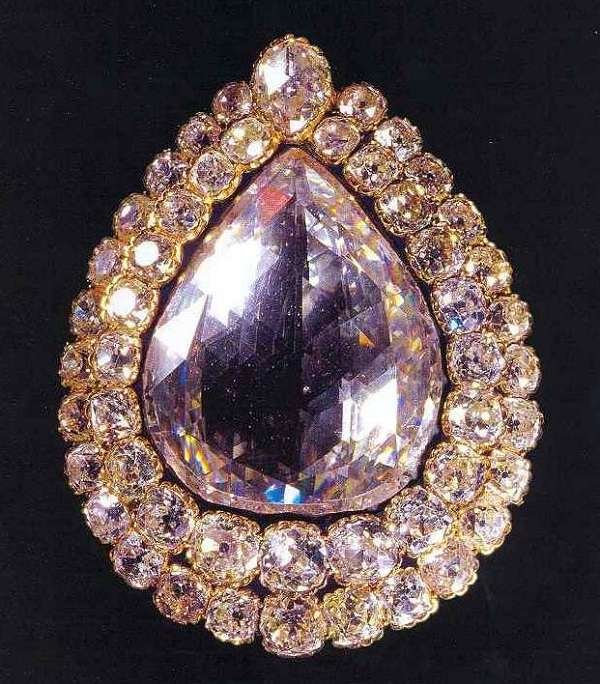
#jewellery #diamond #turkey #topkapi #kasikcielmasi #turkiye #istanbul
THE SPOONMAKER’S DIAMOND (KAŞIKÇI ELMASI)
The Spoonmaker’s Diamond is the largest and most famous of the historical diamonds in the Imperial Treasury. This 86-carat, pear-shaped diamond is surrounded by 49 brilliant-cut diamonds. Several diamond experts have attempted to prove that the Spoonmaker's Diamond is the historical Pigot Diamond, which was lost at the beginning of the 19th century; however, it is known from a record in a daily accounts book (rûznâme) that the diamond entered the Imperial Treasury by way of purchase at the beginning of the 1680s. Several stories have circulated as to how the Spoonmaker’s Diamond came to be in the palace. The most widely accepted among these is that recounted in the work Zübde-i Vak`aiyât (Summation of Events) by Sarı Mehmed Pasha, treasurer in the time of Sultan Mehmed IV (r. 1648-87). In this work, Mehmed Pasha describes the finding of the Spoonmaker's Diamond during the course of events in the year 1090 (May 1679): “A round stone was found among the rubbish in the district of Eğrikapı and [brought to an] ironmonger, who exchanged the stone for three spoons and left it there among his items. Subsequently, one of the jewelers to whom the stone was shown purchased it for 10 akçe and showed the stone to one of his colleagues. When it was understood that the stone was, in fact, a diamond, the colleague also requested a share in the stone. A dispute then arose between the jeweler and his colleague and the situation was brought to the attention of the head jeweler, who gave to both jewelers a small purse full of akçe and took the stone off their hands. Subsequently, His Eminence the Grand Vizier Mustafa Pasha was made aware of the stone's existence and decided to obtain it from the head jeweler; however, when the situation was brought to the attention of the sultan, he commanded the stone to be brought to the palace. In summary, the stone was uncovered, ascertained to be an unparalleled diamond of the size of 84 carats and finally taken into the possession of the sultan. As a result, the head jeweler was rewarded with the office of gatekeeper as well as with a number of small purses of akche.”
The Ceremonial Flask One important collection in the treasury are the Ottoman-made quartz flasks, water pitchers, rosewater vessels and boxes dating to the 16th and 17th centuries and decorated with gold and precious stones. Also, from the same time, are Persian, Indian, Chinese, and Ottoman jade vessels. In addition to these, there is a gold ceremonial flask that is perhaps the most noteworthy example of classic Ottoman jewellery and gold working: made of solid gold and decorated with precious stones, it was used in the times of Sultan Selim II (r. 1566-74) and Sultan Murad III (r. 1574-95).
GIFTS FOR THE SULTANS
Among the gifts that were sent to the sultans are a throne made in India; two small enameled statuettes decorated with precious stones and sent by the Mughals of India to Sultan Abdülaziz (r. 1861-76) while he was still a prince; a jeweled sword sent by Muzaffara’d-Din Shah Qajar of Persia to Sultan Abdülhamid II on the occasion of the latter’s silver jubilee on 31 August 1901; a jade Fabergé vessel with jeweled coat of arms sent by the Russian Tsar Nicholas II (r. 18941917); a pitcher, basin, and table sent from France; and an ebony walking stick ornamented with diamonds sent as a gift by the Mughals.
Source
Plagiarism is the copying & pasting of others work without giving credit to the original author or artist. Plagiarized posts are considered spam.
Spam is discouraged by the community, and may result in action from the cheetah bot.
More information and tips on sharing content.
If you believe this comment is in error, please contact us in #disputes on Discord
Hi! I am a robot. I just upvoted you! I found similar content that readers might be interested in:
https://topkapisarayi.gov.tr/en/content/imperial-treasury